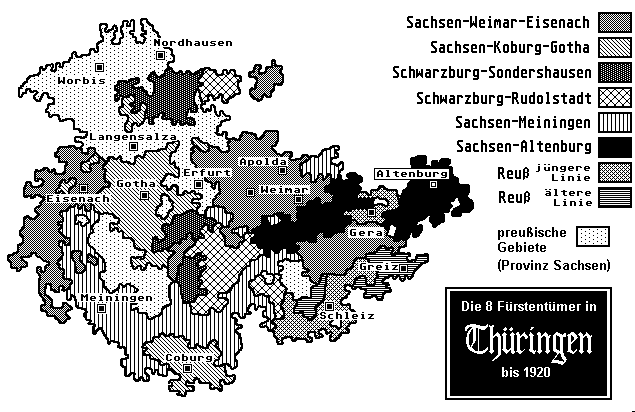 History
History History
HistoryThe current thinking on the ethnogenesis of the Thuringians suggests that they were mainly Angli and Warni, with possibly some connections ot the Hermunduri, and that they formed a more durable confederation in what became Thuringia owing to pressure from the Saxons. Probably they moved gradually southward from Anglia-Schleswig and perhaps Mecklenburg. (see the bibliography in F. Prinz, DEUTSCHLAND BIS 1056 and Malcolm Todd THE NORTHERN BARBARIANS.)
There is some archaeology for Thuringia, a few references in early written sources and a ninth century law code. After the Germanic Thuringians, the Saxons and the Francouians were alternately sovereigns of the region.
The kingdom of Thuringia existed from 400 to 531 between the Main and the Harz. In her "The Thuringian War", the Frankish queen, Radegund mentions the "household gods". In 786 a Thuringian revolt was quelled by the timely death, blinding, and banishment of its leaders. Christianinty spread through Thuringia during the eighth century.
Thuringia was originally a small area between Saxony and Franconia with the large Thuringian forest along its southern border. At the end of the 11th century Ludwig began accumulating various fiefs in the province, and his grandson was named Landgrave of Thuringia. During the Middle Ages, Thuringia was influenced by the dukes of the Ludovingian dynasty, whose reign commenced in 1130. The main residence of the Ludovingians was the Wartburg above Eisenach, where the troubadours of the Middle Ages are said to have carried out their "war of the singers".
The House of Wettin inherited Thuringia by the marriage in 1194 of Jutta daughter of Landgrave Hermann of Thuringia. Thuringia served as the base for their later prosperity. At the begiining of the twentieth century, nine sovereign rulers derived from the House of Wettin
A major step in the development of modern written German was the translation of the Bible into German by Martin Luther in 1521 at the Wartburg above Eisenach.
In the 19th century, there were sometimes more than 15 different miniature states with over a hundred territorial enclaves in Thuringia.
